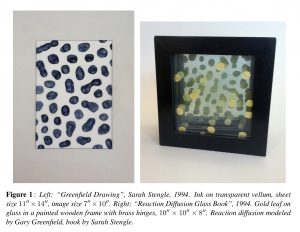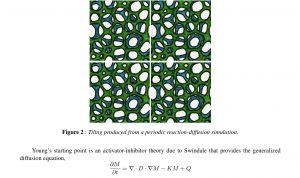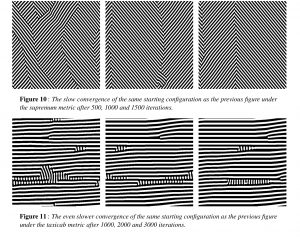Source: Greenfield.pdf
Gary R. Greenfield
Department of Mathematics & Computer Science University of Richmond





Tag: science
Source: Greenfield.pdf
Gary R. Greenfield
Department of Mathematics & Computer Science University of Richmond





Smithsonite, or zinc spar, is zinc carbonate (ZnCO3), a mineral ore of zinc. Historically, smithsonite was identified with hemimorphite before it was realised that they were two distinct minerals. The two minerals are very similar in appearance and the term calamine has been used for both, leading to some confusion. The distinct mineral smithsonite was named in 1832 by François Sulpice Beudant in honor of English chemist and mineralogist James Smithson (c.1765–1829), whose bequest established the Smithsonian Institution and who first identified the mineral in 1802.
Smithsonite is a variably colored trigonal mineral which only rarely is found in well formed crystals. The typical habit is as earthy botryoidal masses. It has a Mohs hardness of 4.5 and a specific gravity of 4.4 to 4.5.
Smithsonite occurs as a secondary mineral in the weathering or oxidation zone of zinc-bearing ore deposits. It sometimes occurs as replacement bodies in carbonate rocks and as such may constitute zinc ore. It commonly occurs in association with hemimorphite, willemite, hydrozincite, cerussite, malachite, azurite, aurichalcite and anglesite. It forms two limited solid solution series, with substitution of manganese leading to rhodochrosite, and with iron, leading to siderite.[3]
UV Type Main color Intensity Observation Frequency
Long Waves (365nm): Yellowish White
Short Waves (254 nm): Red
Other colors LW: White
Other colors SW: Red , Violet red , Green , Blue , Violet
The subsolar point on a planet is where its sun is perceived to be directly overhead (in zenith); that is where the sun’s rays are hitting the planet exactly perpendicular to its surface. It can also mean the point closest to the sun on an object in space, even though the sun might not be visible.
For planets with an orientation and rotation similar to the Earth’s, the subsolar point will move westward, circling the globe once a day, approximately moving along a circle of latitude. However, it will also move north and south between the tropics over the course of a year, so it is spiraling, like a helix.
You can modify this structure using our intuitive drag and drop interface, which allows you to rearrange content to your heart’s content.
“”La haina” means “cruel sun” in the Hawaiian language..”